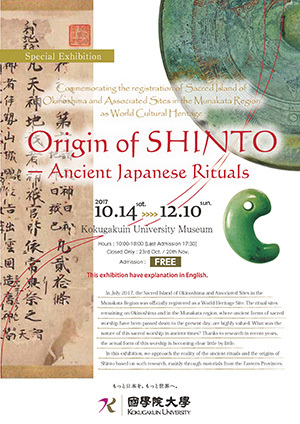In July 2017, the Sacred Island of Okinoshima and Associated Sites in the Munakata Region was officially registered as a World Heritage Site. The ritual sites remaining on Okinoshima and in the Munakata region, where ancient forms of sacred worship have been passed down to the present day, are highly valued. What was the nature of this sacred worship in ancient times? Thanks to research in recent years, the actual form of this worship is becoming clear little by little.
We have come to infer that, as well as simple imitations created from stone and earth for rituals, various wooden items and items made of precious iron were used as offerings at sites of worship in the Kofun Period during the 5th and 6th centuries. We also believe that the ceremonies that took place were the original form of the rituals that developed afterwards. Further, the natural environment of the places where ritual sites were established was closely related to the character of the kami worshiped there. It is thought that this is connected to the idea of a "resident kami" of a specific place, as set down in ancient written accounts such as the "Kojiki", "Nihon Shoki" and "Engi-Shiki".
In this exhibition, we approach the reality of the ancient rituals and the origins of Shinto based on such research, mainly through materials from the Eastern Provinces.
All exhibits have explanation in English.
* Flyer
* List
outline
| Term | Oct. 14, 2017 (Sat) - Dec. 10, (Sun) |
|---|---|
| Place | Kokugakuin University Museum, Special Exhibition Space |
| Hours | 10:00 – 18:00 (Last admission 17:30) |
| Closed | Oct. 23, 2017 (Mon) Nov. 20, 2017 (Mon) |
| Admission Fee | Free |
| Access | Accessible on foot or by bus, 10-15 minutes from Shibuya, Omote-sandō, or Ebisu Station. Directions to Kokugakuin University Museum |
| Organizer | Kokugakuin University Museum |
| English transration |
English transration of this exhibiton is supported by the Agency for Cultural Affairs, Governmanet of Japan in the fiscal 2017. |










